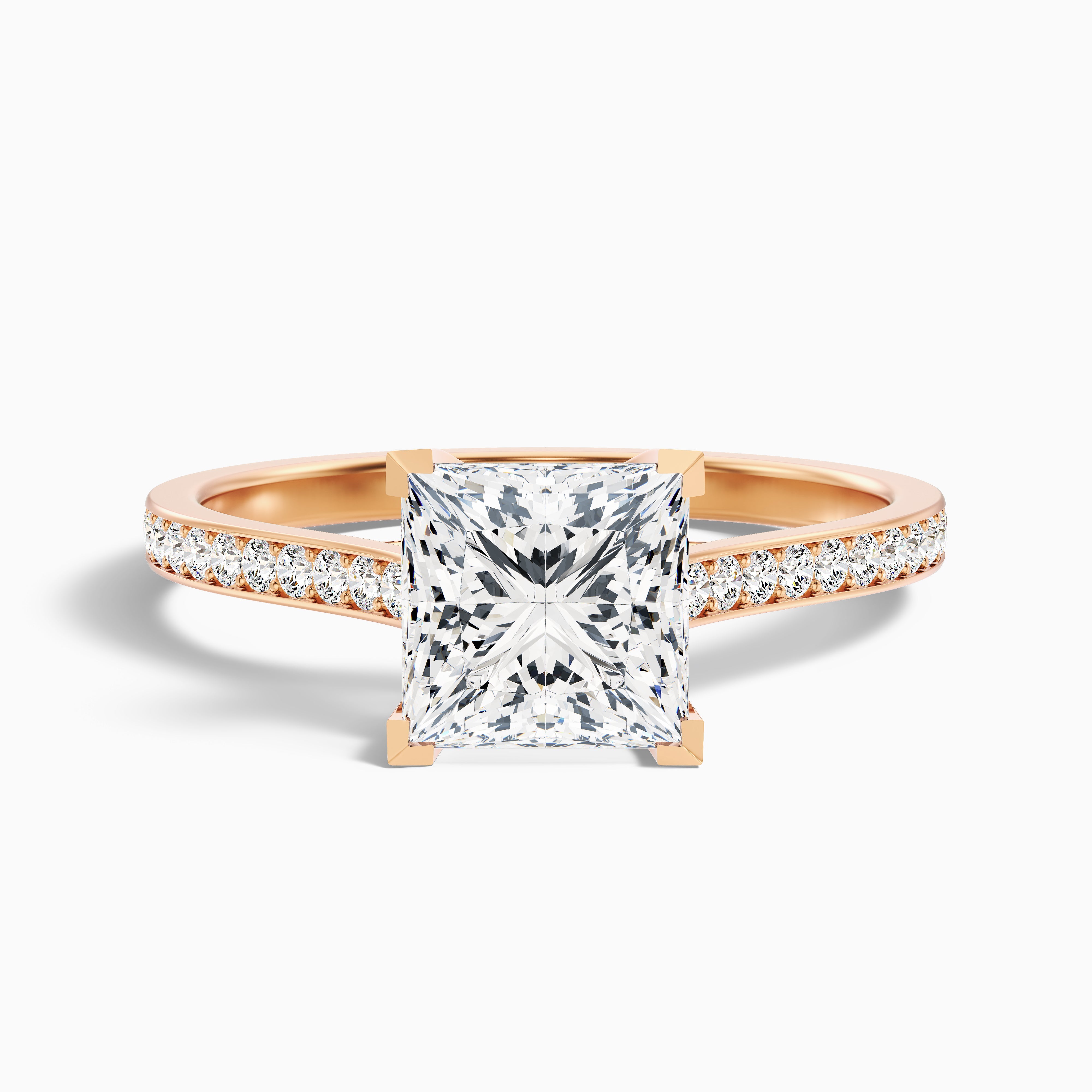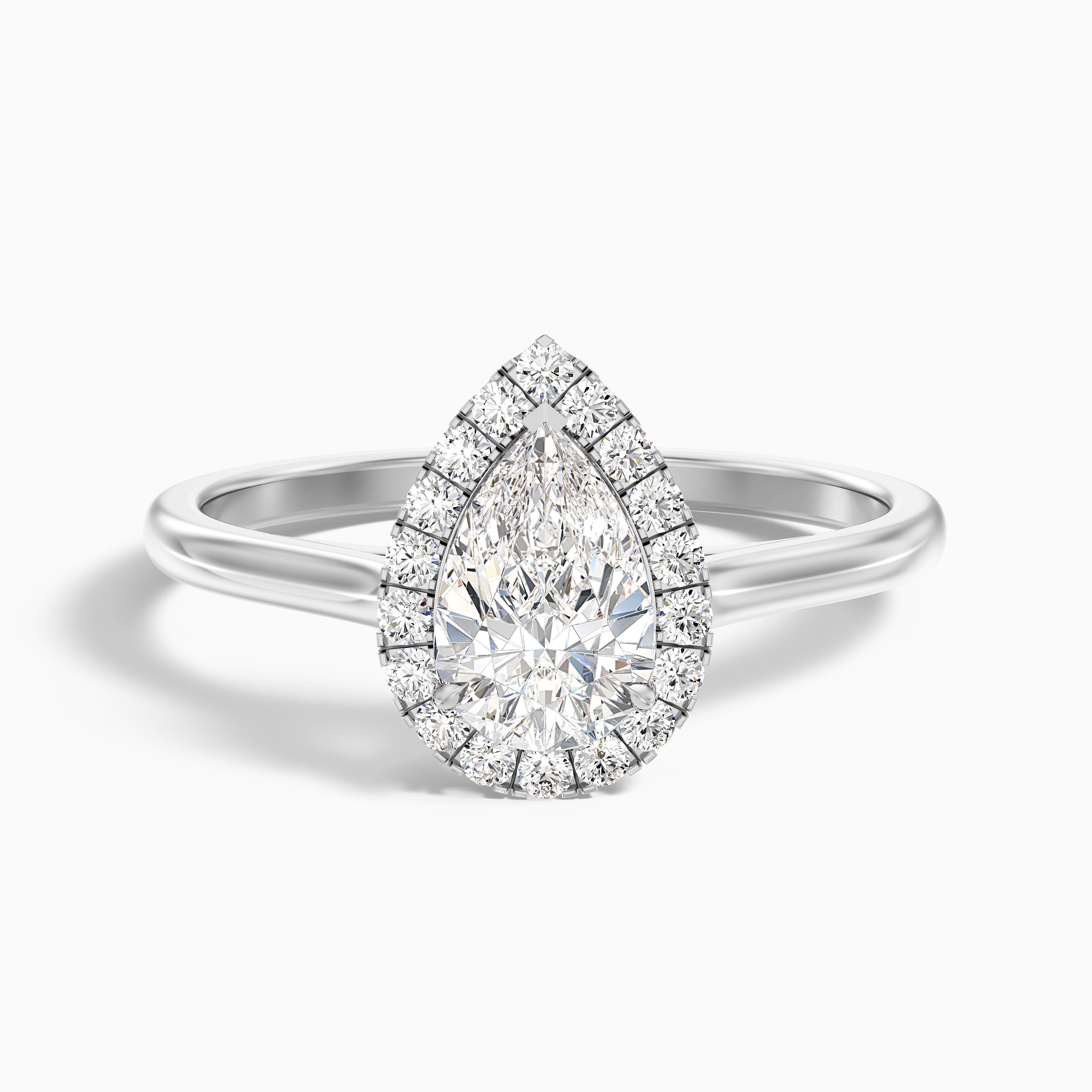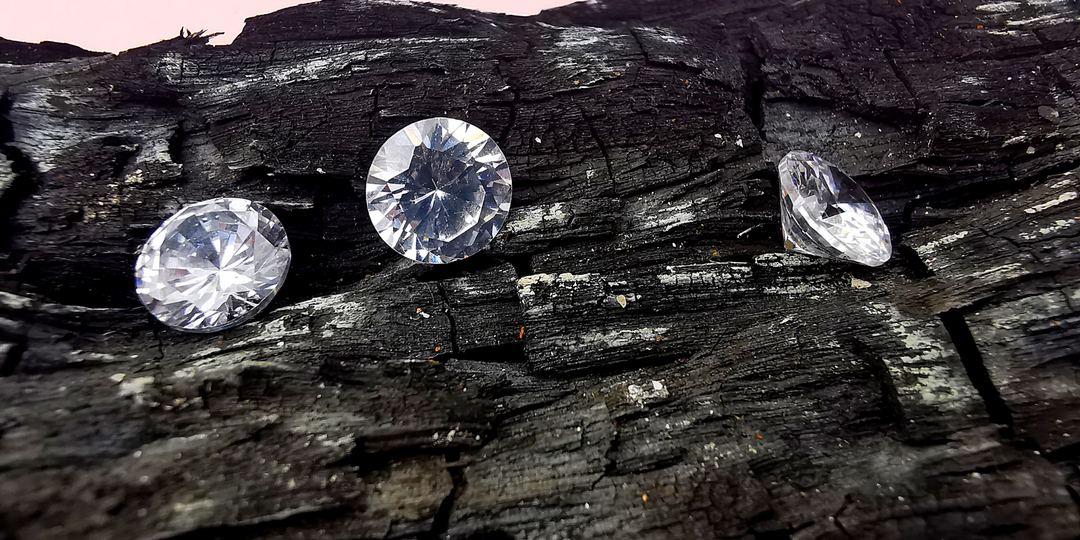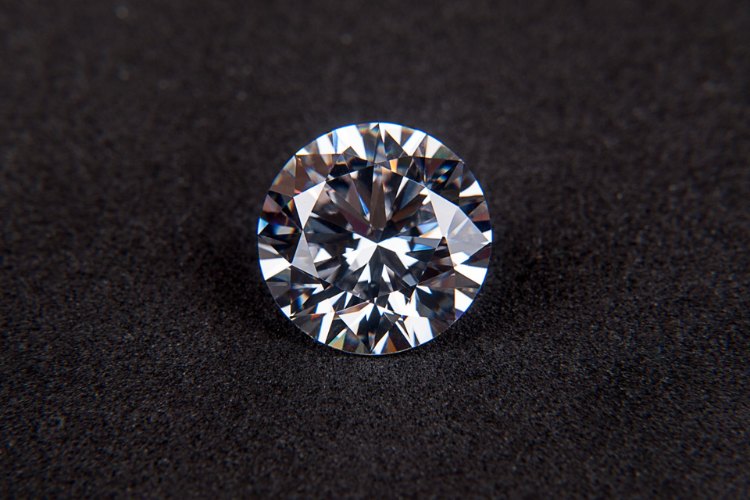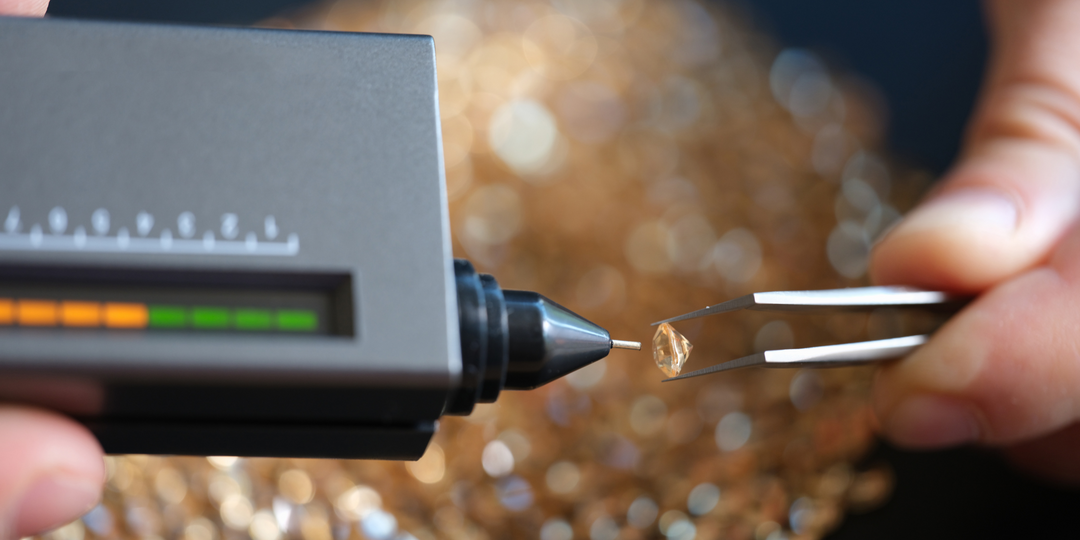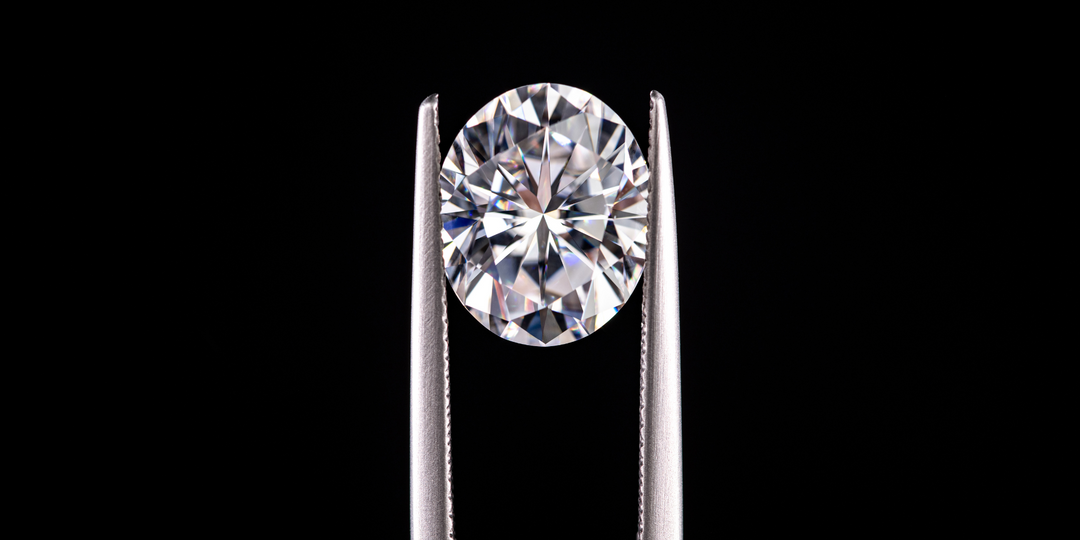How to Insure Your Diamond Engagement Ring?

Soon after you say "yes," you'll be wearing a bright new item on your left ring finger that needs protection. Even if purchasing engagement ring insurance might be the last thing on your mind at this joyous occasion, great rings come with tremendous responsibilities, and you want to be protected in case the cherished jewel experiences any unforeseen circumstances.
Engagement ring insurance can provide financial security and peace of mind when you need it most, regardless of whether you've misplaced your ring at the gym, left it unintentionally on the beach, or had it stolen.
Although it may not be the most glamorous aspect of wedding planning, engagement ring insurance is crucial, so you shouldn't put off getting your ring insured. We've put together a thorough guide that addresses all of the often asked issues about diamond engagement ring insurance, from the price to the precise steps involved.
The Importance of Insuring Your Diamond Engagement Ring
One of the most significant purchases you will ever make is your engagement ring, which is both a priceless investment and a treasured representation of love. One of the greatest methods to safeguard your engagement ring against life's unforeseen events, such as unintentional damage, loss, or theft, is to insure it, considering its high value and sentimental significance.
Your diamond ring can be replaced or fixed without further stress if something goes wrong thanks to the correct insurance coverage. However, not every policy is made equal, and knowing the specifics of coverage as well as any exclusions can make all the difference.
Do You Really Need Engagement Ring Insurance?
Are you unsure if purchasing diamond wedding ring insurance is a good investment?
In a nutshell, the answer is yes.
The reason why wedding ring insurance is 'worth it' shouldn't be a difficult question. If unexpectedly losing an engagement ring would cause financial hardship or emotional distress, then insurance is a wise and cost-effective way to protect it.
The majority of engagement ring insurance plans provide full coverage, meaning that your ring is protected regardless of location. This kind of insurance not only offers financial security to pay for a replacement, but it also makes the repair procedure easier in the event that the ring is broken.
The most beneficial aspect of engagement ring insurance, though, might be the comfort it provides in wearing your ring without worrying about it getting damaged. Therefore, having the appropriate protection plan in place will give you the peace of mind that your ring may be fixed or replaced, allowing you to put it back on your finger where it belongs if anything occurs.
Step 1: Get your engagement ring appraised
If you don't know the value of your ring, you can't defend it. The carat weight, cut, color, clarity, and quantity of diamonds, as well as the types of metal and weight, the shape and carat weight of other stones, and any distinguishing markings, model numbers, or stamps, will all be taken into consideration throughout the appraisal process.
Additionally considered are the piece's craftsmanship, the origin of the materials used, and current selling pricing in the local market. For more valuable things (like rings valued at $5,000 or more), the majority of insurance companies will need an appraisal; but, for less costly goods, an invoice or receipt can be adequate.
Getting jewelry appraised when you buy it guarantees that current market values are represented and unique features are taken into consideration.
Step 2: Understand Different Types of Insurance Coverage
A separate jewelry insurance plan is the ideal way to insure your ring for the most complete coverage. Jewelers Mutual, Zillion, Gem Shield, BriteCo, and Lavalier Jewelry Insurance are examples of businesses that specialize in insuring expensive items and provide plans tailored to engagement rings and premium jewelry.
These policies are meant to offer complete coverage for loss, theft, unintentional damage, and even unexplained disappearance, unlike typical homeowners or renters' insurance. The additional advantages are one of the main advantages of specialized jewelry insurance.
Many regulations address preventive maintenance, such as tightening prongs, making repairs, or even replacing a missing stone, all of which help to maintain the quality of your ring. Furthermore, rather than issuing a payment, these insurers typically collaborate with your jeweler to replace or fix your ring, guaranteeing you get a similar item without any fuss.
One more big benefit? Making a jewelry claim won't result in a premium increase or affect your homeowner's insurance coverage. Anyone wishing to safeguard their ring and their entire financial well-being should consider purchasing stand-alone jewelry insurance.
Step 3: Compare Insurance Providers
A lot of insurance providers provide online quotes. Just include your location and a few essential facts regarding your jewelry, such as the kind and its assessed worth. Your premium, which is the annual cost you pay to keep your insurance coverage, and your deductible, which is the amount you must pay before an insurance company will replace your item, are often included in a quotation.
Additionally, determine what is and is not covered.
Depending on the insurer and the particular policy, the coverage varies. The following is a list of what is generally included and excluded from an engagement ring policy. This is far from complete; be sure to ask your healthcare provider for more details.
What is usually covered:
- Missing
- Theft
- Injury
- Disappearance
- Travel
What is usually not covered?
- If law enforcement confiscates your jewelry, you have civil authority.
- Intrinsic flaw or deterioration, such as a manufacturing flaw (which should be covered by a warranty)
- Deliberate actions: intentionally losing or harming your jewelry
- A nuclear danger is a fire caused by a nuclear reaction.
- Damage caused by vermin, rodents, or insects
- Voluntary separation occurs when you sell your insured diamond ring and the check bounces.
- Military action and war
- Wear and tear
Step 4: Key Questions to Ask Before Insuring
When choosing which insurance company or plan is best for your needs, it is essential to be well-informed. Don't forget to ask a possible policy provider crucial questions like:
- Do you have the option of selecting the person who fixes your ring?
- Where can you get a new ring if you're covered for replacement rather than a cash payment?
- What if a good substitute cannot be found?
- If you file a claim, how will you be able to demonstrate that the ring has disappeared?
- Is there anything that isn't covered?
- When you're outside of the country, will your insurance remain valid?
- Does your policy cover loss and theft only, or does it also cover damage?
- Is the policy susceptible to inflation?
- Which repairs count towards the deductible?
The most crucial step you can take when ensuring anything valuable is to have a firm grasp of the terms of your coverage. You'll have a better idea of which provider offers the best ring insurance as you receive answers to these questions.
Step 5: Compare coverage pricing and options
After conducting some research, you should compare the alternatives you've found. You are likely comparing the coverage and cost differences between two possibilities: homeowner's or renter's insurance, or insurance purchased via an independent firm.
You can buy an extension (sometimes called a rider) that covers your engagement ring specifically if you have homeowner's or renter's insurance. However, keep in mind that a jewelry claim made against your homeowner's insurance may have an impact on your whole coverage. Therefore, at renewal, your premium may rise, or your eligibility for your complete homeowner's coverage may be impacted if your engagement ring was ever lost or stolen.
You may purchase coverage through an independent jewelry insurance business, like Jewelers Mutual, if you don't have homeowner's or renter's insurance. We advise you to leave your house in the care of the professionals in homeowner's or renter's insurance and your valuables in the care of the specialists in jewelry insurance.
Although the majority of homeowner's insurance plans provide some coverage for jewelry, the coverage is frequently restricted by coverage value restrictions, conditions covered, and requirements that jewelry be replaced by jewelry replacement firms.
When comparing insurance alternatives, make sure you have all the facts and data, even if you're just deciding to add a rider to your existing coverage. Don't presume you're protected; instead, contact your homeowner's or renter's insurance company and inquire about the specifics.

Step 6: How to File a Claim
If you take the proper procedures, submitting a claim for diamond wedding ring insurance might be easy.
The following is a step-by-step guide to assist you in the jewelry claim procedure:
- The first step is to notify the proper officials of the event. If there is a theft or robbery, you should make a First Information Report (FIR) to the local police.
- Inform Your Insurance Company: The majority of insurance companies have a limited window of time during which you must report a loss in order to be considered for a claim. Give them every detail they need, such as the time, date, and circumstances of the event.
- Submit Necessary Documents: The FIR, the purchase receipts for the jewelry, images, and any other supporting documentation are often included. To prevent any issues, be sure to provide accurate and comprehensive details.
- Complete the Claim Form: Your insurance company will give you a claim form, either online or in hard copy. Complete the form with accuracy.
- Follow up with the claims adjuster: After you submit your claim, a claims adjuster will examine your case. They may need to conduct an investigation or seek more facts to substantiate the assertion.
- Get the settlement: The settlement amount will be decided by your insurance company after the claim has been accepted. The amount of the refund will be determined by the insured value of the jewelry, less any deductible stated in your policy.
Typical Errors to Avoid When Submitting a Claim
- If you steer clear of these typical errors, submitting a claim for jewelry insurance might be a simple process:
- Always inform your insurer as soon as an incident occurs. Your claim may be refused if you report it late.
- Ensure that you submit all necessary documents, including pictures, receipts, and the FIR. The procedure may be slowed down or the application may be denied due to missing documentation.
- Make sure that every detail on the claim form is accurate. A claim might be denied if the information is inconsistent or incorrect.
Additional Tips for Protecting Your Engagement Ring
Being proactive is key to taking care of your ring; it goes beyond simply obtaining insurance! Frequent cleaning maintains it gleaming and stops dirt accumulation that could harm the settings. You can get a professional cleaning twice a year, or you can use a gentle brush and a little warm, soapy water.
Watch out when you wear it for sports, gardening, or severe chemical cleaning. To prevent scratches, keep it in a jewelry box or purse with a soft lining when not in use. Additionally, remember to have it examined by a professional once a year to look for any worn prongs or loose stones. Your ring will remain secure and brilliant for many years to come if you follow these easy tips!
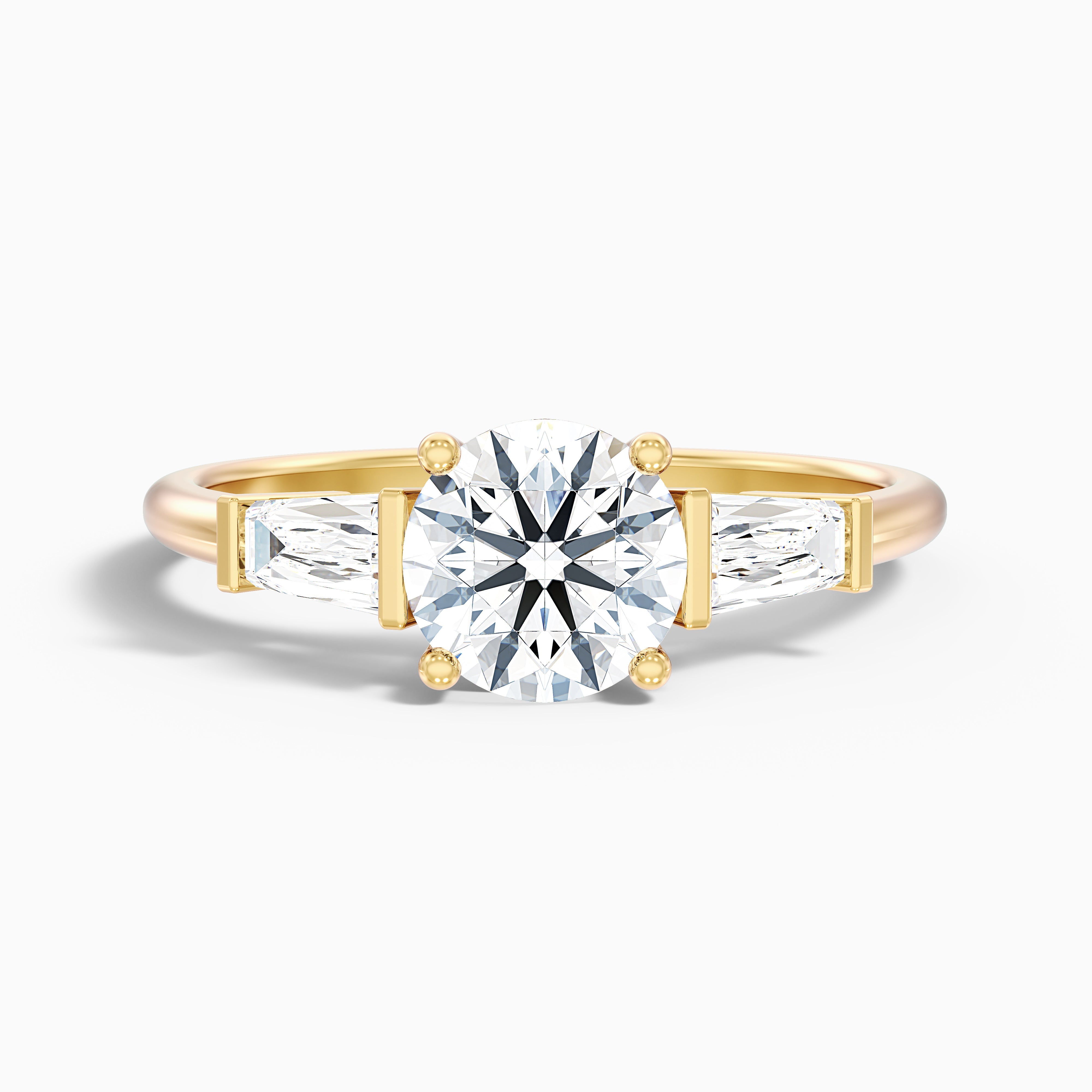 Customize Now
Customize Now
Conclusion
The bottom line: Get Ring, Watch, and Fine Jewelry Insurance Right Away
More than half of the engagement rings sold in the United States, according to some estimates, lack ring insurance. Too often, people believe that any losses will be covered by their renters' or homeowners' insurance. However, many people may regret not getting specialized jewelry insurance following a loss, theft, or unexplained disappearance.
Make sure you can replace your most valuable items without having to shell out a sizable sum of cash out of pocket if you have jewelry insurance.
Don't wait when you have so many options for specialized jewelry insurance. Getting a customer quote from a business like Caratbee only takes a minute. See for yourself how simple and quick it is to obtain excellent coverage in the current digital world.

